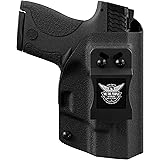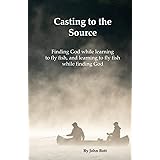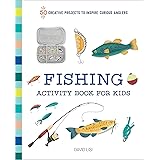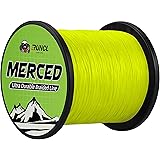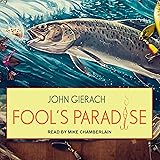Navigating the vast array of fishing rods available can often feel like a complex challenge, particularly when discerning the ideal tool for a specific angling pursuit. Indeed, approximately 70% of beginner anglers report feeling overwhelmed by equipment choices, with fishing rods being a primary source of confusion. The accompanying video provides an excellent overview of various fishing rod types and their intended uses. This article aims to complement that visual guide, offering a more in-depth exploration into the engineering, application, and strategic selection of your next essential piece of angling gear. Understanding the nuances of fishing rod types is not merely about making a purchase; it is about enhancing your effectiveness, enjoyment, and ultimately, your success on the water.
Understanding the Fundamental Roles of a Fishing Rod
Before delving into specific fishing rod types, it is imperative to grasp the core functions that any rod performs. These fundamental roles dictate the design and characteristics of every model on the market, influencing decisions from material composition to overall shape. Consequently, the selection of an appropriate rod begins with an appreciation of these key purposes.
Propelling Bait with Precision and Power
Firstly, a fishing rod is engineered to facilitate the casting of bait or lures to the desired location. The physical attributes of a rod, such as its length and inherent strength, directly influence both the distance and accuracy that can be achieved. A longer rod, for instance, typically allows for greater casting distances, leveraging increased leverage during the cast. However, this advantage is often counterbalanced by a reduction in pinpoint accuracy and ease of handling, especially in confined spaces. Therefore, the chosen rod must strike a balance between reach and control, aligning with the specific demands of your fishing environment.
Absorbing the Energy of a Fighting Fish
Secondly, a rod serves as a crucial shock absorber, mitigating the powerful lunges and headshakes of a hooked fish. Without this vital flexibility, the direct resistance between angler and fish via the line would almost invariably result in the line snapping or the hook pulling free. The rod’s ability to bend, often referred to as its ‘action’ or ‘taper’, distributes the strain, protecting your line and hookhold while gradually tiring the fish. This controlled absorption is paramount for landing vigorous species, ensuring that sudden surges of energy are cushioned rather than directly resisted.
Providing Vital Bite Indication
Finally, certain fishing rod types are specifically designed to offer sensitive bite indication. This feature is particularly prominent in feeder and lure fishing, where subtle movements at the rod tip signal a fish investigating or taking the bait. A highly sensitive tip allows anglers to detect even the most tentative of bites, enabling a quicker and more effective strike. Imagine if you could detect a fish merely nudging your bait; the right rod can provide precisely this level of detailed feedback, transforming your success rate.
Deconstructing Fishing Rod Specifications: Length, Test Curve, and Casting Weight
When one examines fishing rods, three primary specifications are frequently encountered: length, test curve, and casting weight. These parameters are critical in understanding a rod’s capabilities and matching it to specific angling scenarios. Each specification provides a distinct insight into the rod’s performance characteristics, dictating its suitability for various techniques and target species.
Rod Length: Reach Versus Control
The length of a fishing rod is perhaps the most immediately obvious characteristic. Measured from the butt to the tip, rod length significantly impacts casting distance, leverage during a fight, and maneuverability. Shorter rods (typically 6-9 feet) offer superior control and accuracy for close-range work or in areas with overhead obstructions, such as overgrown banks. Conversely, longer rods (10-13 feet or more) excel at achieving greater casting distances, essential for reaching distant features on large lakes or controlling a float on a wide river. However, longer rods can be more cumbersome to transport and handle, especially for beginner anglers. Therefore, the optimal length is often a compromise tailored to the specific fishing environment and technique.
Test Curve: The Rod’s Power Rating
The ‘test curve’ is a critical, yet often misunderstood, specification, especially prevalent in the UK coarse fishing market. It quantifies the amount of weight, measured in pounds (lbs) and ounces (oz), required to bend the rod tip through 90 degrees while the butt is held horizontally. A higher test curve indicates a stiffer, more powerful rod, capable of casting heavier weights and exerting greater control over larger, more powerful fish. For instance, a 1.5 lb test curve rod would be considered relatively light, suitable for smaller fish and delicate presentations, whereas a 3.5 lb test curve rod signifies a powerful tool designed for heavy leads and battling large carp. The test curve essentially defines the rod’s backbone and its capacity for handling substantial strain.
Casting Weight: Matching Rod to Rig
Casting weight, typically indicated in grams (g) or ounces (oz), advises the angler on the optimal range of weights (lures, feeders, leads) that can be effectively cast with a particular rod. Adhering to the manufacturer’s recommended casting weight is crucial for both performance and rod longevity. Using a weight that is too light will prevent the rod from loading correctly, resulting in poor casting distance and accuracy. Conversely, using a weight that is too heavy risks overstressing the rod blank, potentially leading to irreparable damage during a forceful cast. Imagine if a car engine was constantly run at redline; the same principle applies to fishing rods. The correct casting weight allows the rod to flex efficiently, storing and releasing energy to propel the rig smoothly and effectively.
Exploring Specialized Fishing Rod Types
The angling world has evolved to such an extent that specialized fishing rods exist for virtually every technique and target species. Understanding these specializations allows anglers to select equipment that is precisely tuned for maximum efficiency and enjoyment.
Float Rods: The Entry Point to Angling
Float fishing, often the initial foray into angling for many, typically employs specific float rods. These rods are characterised by their sensitivity and forgiving action, designed to protect fine lines and absorb the runs of smaller coarse fish. While 12-foot float rods are widely available and capable of good casting distances and handling larger fish in deeper waters, a 10 or 11-foot version is often recommended for beginners. These shorter models are considerably more manageable, less prone to snagging in bankside vegetation, and offer improved casting accuracy for those developing their technique. Float rods usually feature numerous small eyes and a soft, parabolic action that extends through the entire blank, allowing delicate floats to be flicked out with minimal effort. Some variations include ‘waggler rods’ and ‘pellet waggler rods’; the latter often being slightly stiffer for handling larger carp and heavier wagglers.
Feeder Rods: Precision Bait Delivery and Bite Detection
As anglers progress, many discover the efficacy of feeder fishing, a method requiring rods designed for accurate bait delivery and superior bite indication. Feeder rods are typically stronger in the butt section, providing the necessary power to cast loaded feeders, which can be considerably heavier than typical float rigs. Critically, these rods feature a highly sensitive, often brightly coloured, tip section. This tip, which is frequently interchangeable, is specifically designed to register the slightest of bites, often before the fish feels any resistance from the main line. Different tip strengths (e.g., half-ounce, one-ounce, two-ounce) allow anglers to fine-tune bite indication for various species and conditions. Larger eyelets are also a common feature, accommodating the slightly thicker lines often used when repeatedly casting heavier feeders. For instance, a 10-foot feeder rod with a 40-gram casting weight is often ideal for smaller method or maggot feeders on commercial fisheries, while a 12-foot power feeder rod, capable of casting up to 80 grams, becomes essential for targeting species like barbel or large chub in powerful rivers.
Carp Rods: Power for Big Fish and Distant Casts
Dedicated carp fishing rods represent a significant leap in power and construction, necessitated by the formidable strength and size of carp, particularly those over the 10-15 pound bracket. These rods feature thick, robust blanks, large, strong eyes, and higher test curves (typically 2.5 lb to 4 lb) to cope with heavy leads, powerful casting, and the intense battles carp often present, especially near snags or dense weed beds. Historically, 12-foot carp rods were the standard, believed necessary for extreme casting distances. However, the last decade has seen a rise in popularity for shorter 9 or 10-foot carp rods. These compact rods offer excellent accuracy at shorter to medium ranges, are far more manageable in tight swims, and provide immense enjoyment when playing fish. For long-range applications, however, a 12-foot rod with a 3.5 lb or 4 lb test curve, often paired with a ‘big pit’ reel for increased line capacity, remains the optimal choice for propelling rigs to the horizon. Within carp fishing, specialist rods also exist: ‘spod rods’ and ‘marker rods’. These are exceptionally stiff, powerful versions designed solely for casting heavy bait rockets (spombs) or marker floats with precision over long distances, crucial for effective baiting and feature finding.
Lure Rods: The Dynamic Tools for Active Angling
Lure fishing rods are crafted for active angling, where the angler is constantly working a lure to entice predatory fish. This category encompasses a wide spectrum of designs, each tailored for different lure weights, species, and techniques. Light spinning rods, typically 6.5 to 7 feet long, are often very light in hand with a responsive tip, ideal for casting smaller spinners, spoons, or soft plastics for species like perch and smaller pike. Their short handles facilitate comfortable casting and lure manipulation. Drop shot rods take sensitivity to an extreme; these softer, incredibly light rods feature an ultra-sensitive tip, making them perfect for detecting the subtle taps of fish mouthing small lures worked slowly along the bottom, essential for finesse techniques targeting species like zander or even shy chub. Conversely, for casting very large lures, such as substantial swimbaits or oversized jerkbaits for big pike, a beefier, longer rod (e.g., 8.5 feet with a 40-140 gram casting weight) is employed. These are often paired with multiplier reels, allowing for greater torque and line control when battling powerful predators. The choice here is driven by the size and weight of the lure, and the anticipated fight from the target species.
The Compromise: One Rod for Everything?
It is entirely understandable that the prospect of purchasing a dedicated rod for every fishing rod type or technique can be daunting, particularly for those just starting out or working within a budget. While a highly specialized rod will always outperform a generalist one in its intended application, a single, versatile rod can indeed serve as a valuable starting point. Many anglers, including seasoned veterans, commenced their journey with a single, multi-purpose rod, accepting its limitations as a trade-off for accessibility. For instance, a medium-action lure rod, approximately 8 to 8.5 feet in length, designed for smaller pike, perch, and bass, often proves surprisingly adaptable. This type of fishing rod possesses sufficient backbone to handle moderately sized fish yet retains enough sensitivity for lighter presentations. While it may not cast a heavy carp lead effectively or offer the pinpoint bite indication of a dedicated feeder rod, it can facilitate a wide range of angling experiences across different venues and target species. As experience and passion grow, the natural progression towards more specialized gear can then be a rewarding journey, enabling greater precision and success in specific angling disciplines. Eventually, your angling arsenal may indeed be filled with the diverse fishing rod types that cater perfectly to your every pursuit.



